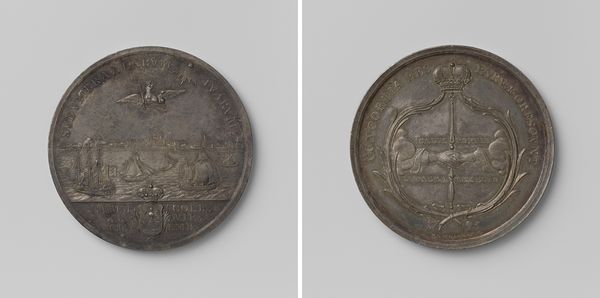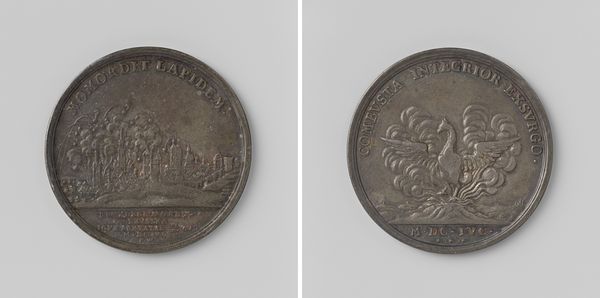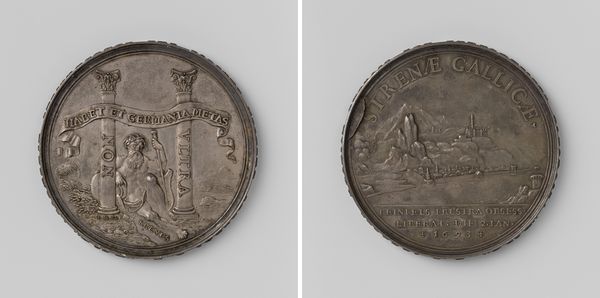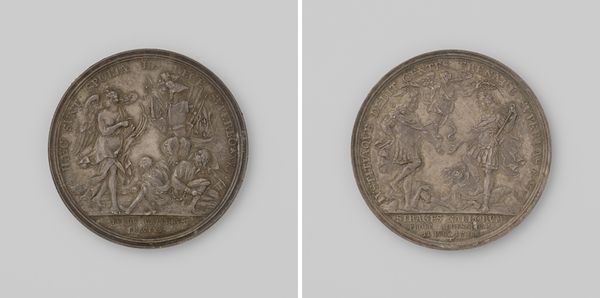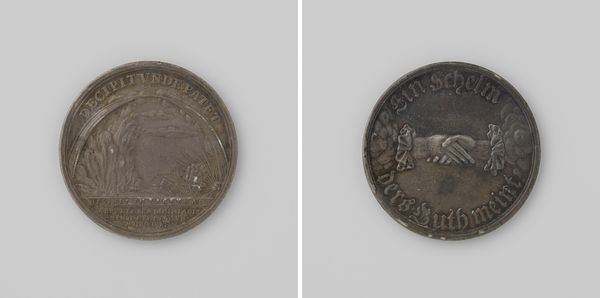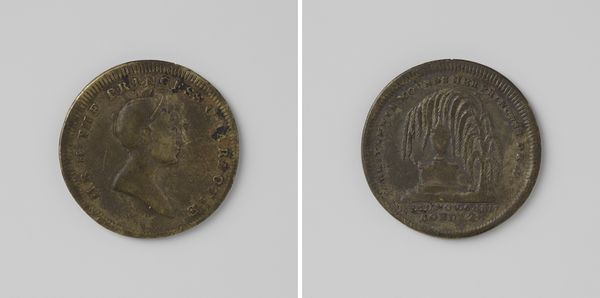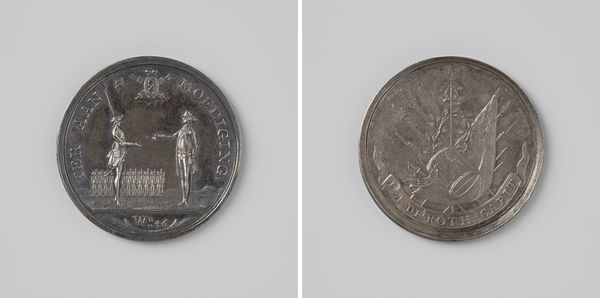
Aanvang van de 19de eeuw en het tekenen van de voorlopige vredesvoorwaarden te Luneville 1801
0:00
0:00
metal, relief, sculpture
#
portrait
#
neoclacissism
#
metal
#
sculpture
#
relief
#
sculpture
#
history-painting
Dimensions: diameter 4.5 cm, weight 26.94 gr
Copyright: Rijks Museum: Open Domain
Curator: Let's dive in. Editor: This is a metal relief created by Johan George Holtzhey in 1801. It's titled "Aanvang van de 19de eeuw en het tekenen van de voorlopige vredesvoorwaarden te Luneville," commemorating the beginning of the 19th century and the signing of the Treaty of Lunéville. It has an illustrative narrative feel to it. How do you interpret this work within its historical context? Curator: This piece operates as propaganda legitimizing power. Can you make out any symbolism within its visual language? Notice the imagery, like the angel trumpeting victory. How does it position the Treaty of Lunéville within the grand narrative of European power dynamics? Editor: Well, the angel suggests divine approval. I'm thinking it suggests the treaty was somehow destined. What about the neoclassical style—does that play a role? Curator: Absolutely! Neoclassicism evokes the Roman Empire, presenting Napoleon’s regime as a new era of "Pax Romana." But who exactly did the Treaty serve and at whose expense? Was it a moment of unity or did it sow seeds for further conflicts? Editor: That's a good point, it only highlights one side of the peace. Framing it as this perfect moment hides the complexities and power imbalances present at the time. The victors write history, as they say. Curator: Exactly. Reflecting on the medal today forces us to remember those unseen perspectives. To truly interrogate how narratives of peace often mask systemic inequalities and erasures. Editor: I hadn’t considered how celebratory depictions can obscure the lived realities of many. It gives me a new lens for questioning historical representations.
Comments
No comments
Be the first to comment and join the conversation on the ultimate creative platform.


